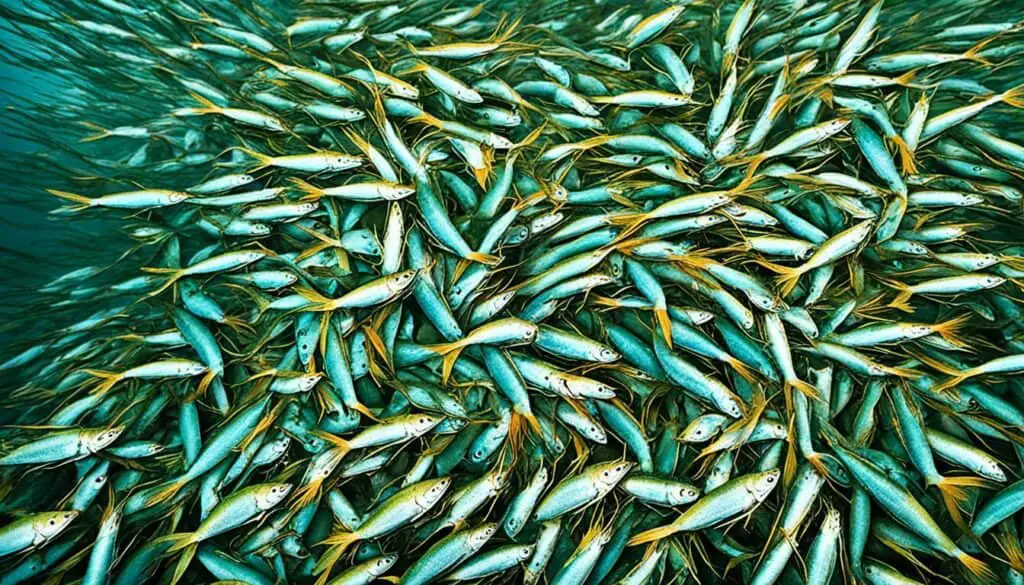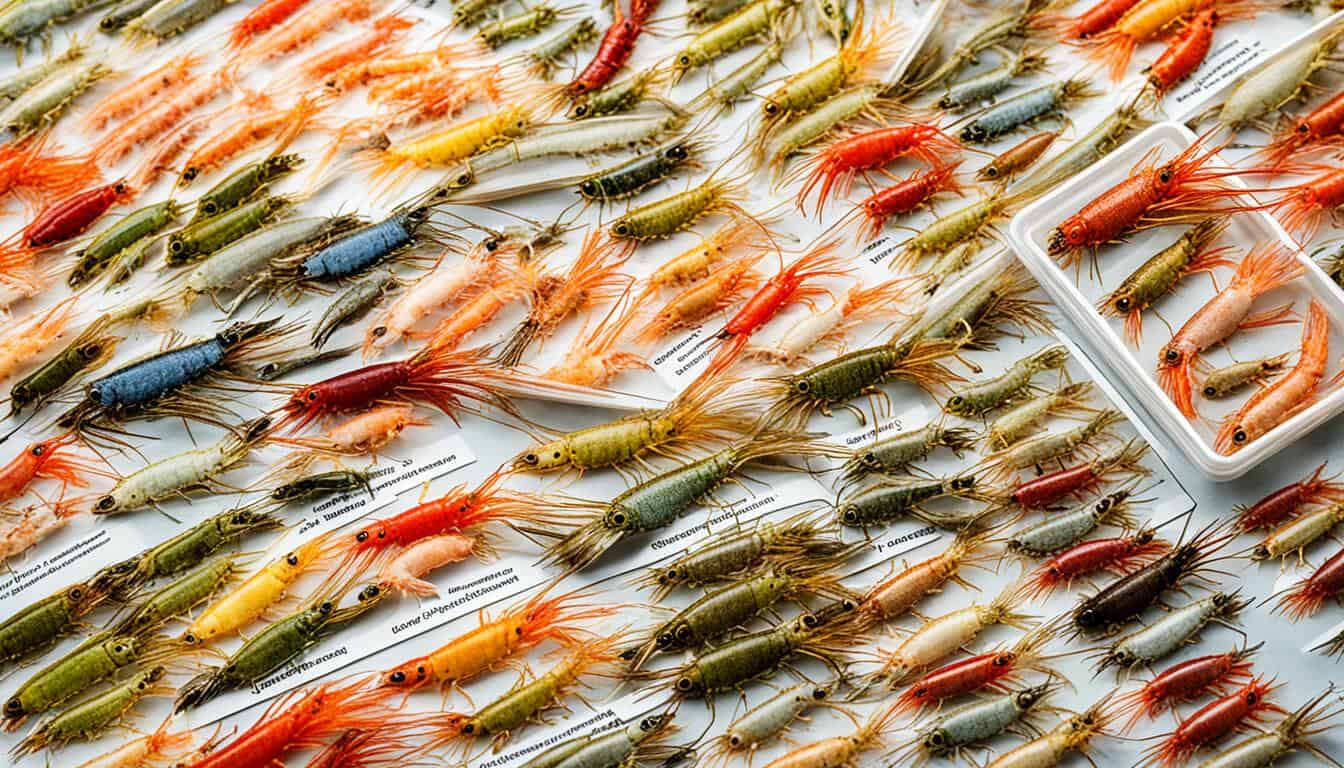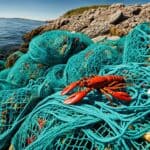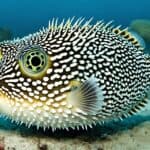Have you ever thought about if shrimp are endangered? There are about 763 types of freshwater shrimp worldwide. It’s important to look into how these creatures are doing. Sadly, almost 28% of them are in danger of disappearing, and two are already gone.
The California freshwater shrimp is on the endangered list. This shows we need to pay more attention to shrimp that are at risk. Learning about their importance in water ecosystems and the dangers they face helps us understand the big issue of losing biodiversity.
Understanding Shrimp Species Diversity
Exploring shrimp species diversity shows us a world full of life in our waters. These creatures live in many types of water, making a big impact on their homes. They help keep freshwater systems healthy by cycling nutrients and supporting food chains.
Overview of Freshwater Shrimp Species
Freshwater shrimp can be found all over the world, especially in rivers, lakes, and streams. China has the most freshwater shrimp species, with 159, followed by Indonesia with 116. They are important because they break down organic matter, keeping streams healthy and stable.
Global Distribution of Shrimp Species
The Indo-Malayan region has the most shrimp species. This area has many different habitats that support a wide variety of shrimp. By studying where shrimp live, we can work to protect these important places. Protecting their homes and restoring damaged areas is key to saving these diverse shrimp.
| Country | Number of Freshwater Shrimp Species |
|---|---|
| China | 159 |
| Indonesia | 116 |
| India | 80 |
| USA | 75 |
| Brazil | 62 |
Are Shrimp Endangered?
Understanding the risk of shrimp extinction is key for our planet’s health. The IUCN Red List shows many shrimp species are in danger. About 30% of freshwater shrimp are at risk, with some even at Critically Endangered, Endangered, or Vulnerable levels.
Things like pollution, destroying their homes, and overfishing are big threats. These issues affect shrimp all over the world.
Assessment of Shrimp Extinction Risk
Looking into shrimp species shows how endangered they are. The numbers are striking, showing a wide range of conservation statuses. Here’s a closer look at some shrimp and their risk levels:
| Shrimp Species | IUCN Status | Extinction Risk Factor |
|---|---|---|
| California Freshwater Shrimp | Endangered | Habitat loss, pollution |
| Pacific White Shrimp | Vulnerable | Overfishing, climate change |
| Louisiana Shrimp | Not Evaluated | Potential threats from habitat degradation |
Current Conservation Status of Shrimp Species
Looking at shrimp conservation shows both good and bad news. The California freshwater shrimp has been endangered since 1988. This shows how urgent conservation is.
Despite efforts, pollution and habitat loss keep being problems. We need strong plans to help endangered shrimp recover.
Major Threats Facing Shrimp Populations
Shrimp populations face big threats, like overfishing, destroying their homes, and pollution. It’s key to understand these threats to save these important sea creatures.
Impact of Overfishing on Shrimp Numbers
Overfishing is a big danger for shrimp all over the world. Taking too many shrimp for the aquarium trade has made many species less common. People want colorful shrimp, so fishermen take too many, lowering their numbers.
This drop affects not just the shrimp but also the ecosystems that depend on them.
Effects of Habitat Destruction
Habitat destruction is a major reason shrimp populations are falling. Wetlands are being lost to cities, farms, and factories. Since the 1700s, 87% of natural wetlands have vanished, changing where shrimp live.
This change makes it hard for shrimp to live and reproduce, threatening their survival.
Pollution and Its Threat to Freshwater Shrimp
Pollution is a big threat to freshwater shrimp. Dirty water from factories, farms, and plastic harms their health and survival. In places like Kerala, India, pollution has made some shrimp endangered.
Long-term exposure to pollutants makes shrimp more vulnerable, adding to the dangers they face.

Freshwater Habitat Degradation and Its Consequences
The degradation of freshwater habitats is a big threat to shrimp populations. Wetlands are crucial for their survival, offering food, breeding grounds, and shelter. But, as cities grow and farms expand, many wetlands are lost, directly affecting shrimp numbers. This loss harms not just shrimp but also the diversity of aquatic life.
Impact of Wetland Loss on Shrimp Species
With wetlands vanishing, freshwater shrimp face big challenges. Wetlands are key nurseries for young shrimp, providing a safe place for them to grow. Without these habitats, many shrimp species struggle to survive. This loss affects not just shrimp but also the entire aquatic food chain, showing how connected these ecosystems are.
Threats from Invasive Species
Invasive species add to the problems faced by native shrimp. These outsiders can take over shrimp habitats and food sources, leading to more declines. Some invasive species even bring predators that shrimp can’t handle, making things harder for them. It’s important to work on both habitat protection and controlling invasive species to help shrimp and keep aquatic ecosystems healthy.
FAQ
Are shrimp endangered?
Yes, many shrimp species are at risk of extinction. About 28% of freshwater shrimp are threatened, and some are already gone. The California freshwater shrimp is an endangered example.
What is the conservation status of shrimp species?
Many shrimp species are in danger, with nearly 30% at high risk. Conservation efforts are key to their survival.
What threats do shrimp populations face?
Shrimp face threats from overfishing, habitat destruction, and pollution. These issues lead to fewer shrimp and harm aquatic ecosystems.
How does habitat destruction affect shrimp?
Habitat destruction, like wetland loss, hurts shrimp populations. Wetlands are vital for many shrimp, and losing them makes survival hard.
What are the effects of pollution on shrimp?
Pollution is a big threat to shrimp, making their homes toxic. For example, pollution in Kerala, India, has endangered some shrimp species.
How does wetland loss impact shrimp species?
Losing wetlands means fewer shrimp. These areas are crucial for shrimp, and losing them hurts biodiversity.
What is the role of invasive species in shrimp population decline?
Invasive species compete and prey on native shrimp. This makes life harder for shrimp and increases their survival risks.







